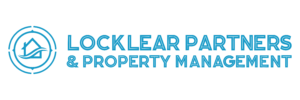If you live anywhere near the Arlington Area in Jacksonville Florida, you may have seen an elderly tall and slender African-American gentleman, with a neatly trimmed beard and Oakley shades jogging slowly along the sidewalk. I have been observing this gentleman for several years. I have never seen him run fast, but have seen him running in the rain, bitter cold and scorching heat – always at the same steady slow pace. I have often thought I would like to talk with him, to understand what motivates him to such consistency. I would be very surprised to learn that his life is anything but a story of success, based on overcoming adversity and simply refusing to quit or to fail. The fact is – success of any kind is a marathon, not a sprint. Nowhere is this truth more applicable than in the real estate investing business.
My journey through real estate investing began with wholesaling, progressed through many phases where I both succeeded and failed. When I talk about my degree from the school of hard-knocks, believe me – I really have tried just about everything at least twice. I have made tons of money in real estate and lost a bunch as well. There is one thing however, that I have never done and never will do. I will never quit. I am very satisfied with my real estate accomplishments, but I can tell you – it has been a marathon, not a sprint.
I understand that real estate investing is a long-term process, so I want to share some of the things that I have learned about owning renovated rental property …
Maintenance, vacancy and other cost are not linear, but will be higher up front and lower in later years.
- Property Maintenance
- Your first year of ownership will include a “shakedown” period where the tenant will discover items that were not evident in the initial renovations. These will result in a higher maintenance expense in the first year and a lower expense over future years.
- There are decisions that you can make during the renovation that will affect overall maintenance cost and therefore long term investment returns. It is important to understand where spending money will actually affect long-term returns. Let’s analyze a few common items…
- Interior paint – Flat interior wall paint cost about $900 and will last an average of 3 years. This can be reduced to a cost of $25/month. Semi-gloss will cost about $1,000 and will last about 4 years = $21/month, but will have to be washed and touched-up around year 3, therefore the cost is about the same and flat paint covers imperfections better than semi-gloss. Using semi-gloss paint on walls is not a substantial cost saver.
- Exterior Wood Siding – Painting wood siding cost about $1,300 and last around 6 years = $18/mo cost. Vinyl siding and eaves cost around $3,300 and last around 20 years = $14/mo cost. Vinyl siding is a long-term money saver. If your house is masonry with wood eaves, consider installing vinyl soffit and fascia.
- Condenser Replacement, vs New HVAC – Many homes we buy are missing the HVAC condenser. You can replace the condenser for around $1,300 and expect a useful life of around 4 years = $27/mo. A new system can be installed for around $2,700 and will have a useful like of around 10 years = $23/mo. The new system will be much more efficient resulting in lower electric bills and better tenant retention. If you can afford it – go new.
- Carpet vs Ceramic Tile – In an average 1000SF house with concrete floors, carpeting cost about $1,200 and should last around 4 years = $25/mo. Ceramic tile cost around $2,400 and last at least 18 years = $11/mo
*Please Note: These are 2014 prices typical to renovations contracted and completed by Joe Locklear on investment properties sold by Locklear Real Estate Partners in Jacksonville Florida.
- Vacancy
- Like anything else involving people, you may have to go through a few before selecting the best person for a position. This may mean you will most likely have a couple of single year tenants, before finding the best match for your property. Once a good “fit” is in place, expect several years of continuous tenancy. This may mean a vacancy rate as high as 10% the first couple of years, and as low as 0% over the next several years.
- Remember it is a marathon, not a sprint. Your long-term vacancy rate should settle-in between 4% and 5%. The most effective things you can do to reduce vacancy are to properly screen tenants, treat them with respect and provide prompt property maintenance. If your house is properly renovated, that will go a long way in keeping happy tenants.
In conclusion, the most effective adjustment that you can make to insure long term success is within your own mind. I have gotten calls from investors complaining that they have owned a property twelve months and looks like their return is only about 5-6%. I have also spoken with investors that are happy with their 15% return over 10 years. Some of my family investments have averaged over 20% long term. I have not even seen some of these houses in the last several years.
If there is one thing that I have learned over my 30+ years in this business, it’s this… Real Estate Investing is a Marathon, NOT a Sprint. If you can learn this lesson early, your chances of staying in business until your investments reach full potential will be greatly increased. Hang in there! The best is yet to come.

